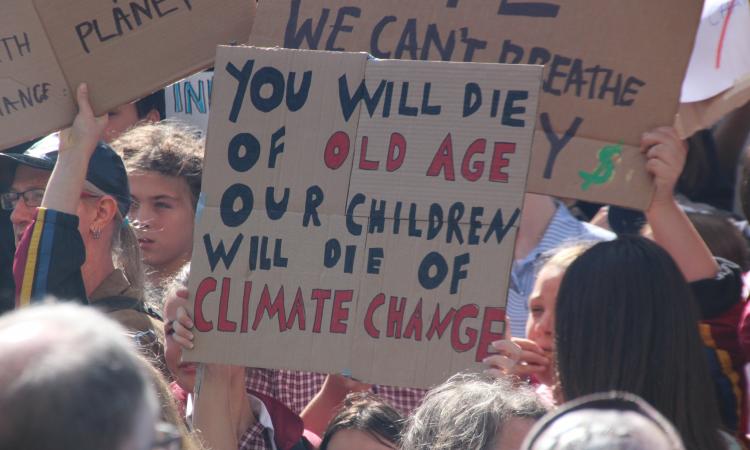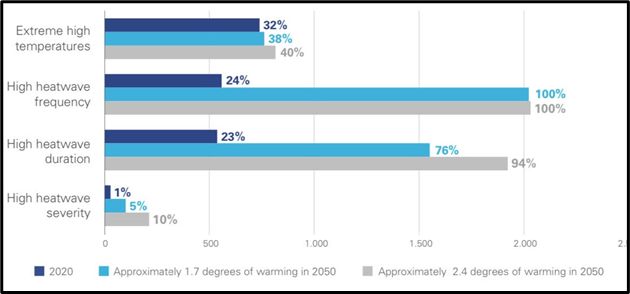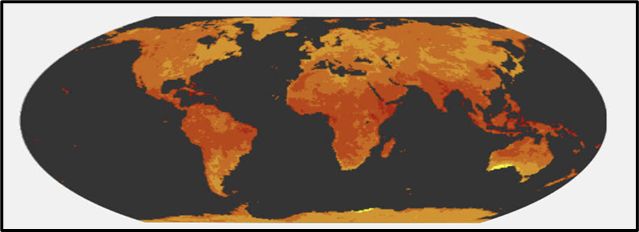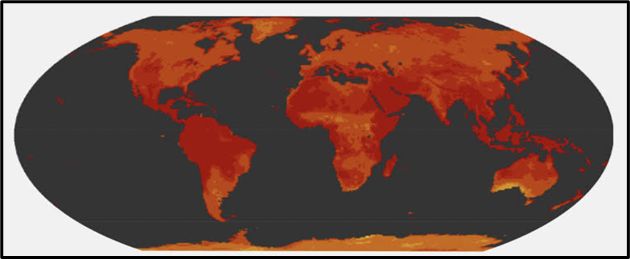
On October 25 2022, UNICEF released a report titled "The Coldest Year of the Rest of Their Lives: Protecting Children from Escalating Impacts of Heatwaves". According to this report, due to an increase in the average temperature of the earth, every child in the world would be affected by heatwaves every year by 2050.

In 2020, 559 million children were affected by four to five heatwaves a year. By 2050, the number of these children could increase fourfold to two billion, even if the temperature rise is only 1.7 degree Celsius. This report provides estimates and analysis on the number and percentage of children expected to be exposed in 2020 and by 2050 to four measures of heat: high heatwave frequency, duration and severity and extreme high temperatures.
It examines two scenarios of average increase of temperature for 2050: a low greenhouse gas emission scenario with an estimated 1.7-degree Celsius increase of average temperature of earth by 2050; and a very high greenhouse gas emission scenario with an estimated 2.4-degree Celsius increase of average temperature of earth by 2050.

According to the report, in 2020, 10 percent of Africa's children were exposed to frequent heat waves under the influence of a high temperature scenario. In 2050, this number will increase to 100 per cent under both temperature increase scenarios.


As many as 402 million children in Asia, (1 out of 3 children), were affected by four to five-day heatwaves in 2020. In 2050, the number of these children may increase to 816 million (2 out of 5 children) under the influence of the low temperature increase scenario.
In 2020, heatwaves were having a greater impact on children in 23 countries. In 2050, with an increase in temperature of 1.7-degree Celsius children of 33 countries and with an increase of 2.4-degree Celsius children of 36 countries will come under the influence of heat waves.
In 2050, children in Africa, Asia and Europe may be more affected than other places affected by high temperature increases. Only a small proportion of children, five percent (13 million), were affected by high heat wave severity in the Americas in 2020, but in 2050, the number could be 62 million. According to this UNICEF report, by 2020, 58 percent of the children were not yet affected by any kind of heatwaves.
Due to the increase in the average temperature of the earth, heat records have been broken in many countries of the world in 2022. The past seven years have been the warmest years on record. In March of 2022, an increase of 30 and 40 degree Celsius has been recorded in the average temperature in the Arctic and Antarctica respectively.
The 122-year-old record of increase in average temperature in India in March has been broken. In 2022, the temperature in Pakistan reached 48 degrees Celsius while temperature reached 40 degrees Celsius in many parts of Europe.
In many countries of the world, summer arrived prematurely causing spring to fade away. With the early arrival of summer, heatwaves also came earlier for a longer duration. The intensity of the heatwaves was so high that drought conditions arose in many countries of the world.
China, the United States of America and many countries of Europe and Africa came under the grip of drought. Europe is facing the worst drought in the last 500 years while the western region of the United States of America is experiencing the worst drought of 1200 years in the last two decades.
African countries like Somalia, Kenya, and Ethiopia have been in the grip of severe drought for the last four consecutive years. This year, due to the record-breaking heat, the rivers of China and many European countries almost dried up.
In 2022, natural disasters like record-breaking temperature, heatwaves, droughts, wildfires, and floods have wreaked havoc in various countries. The main reason for the occurrence of so many natural disasters is the increase in the average temperature of the earth. Compared to the pre-industrial revolution period, the average temperature of the earth has increased by 1.1 degree Celsius.
Now let us think that if the increase of 1.1 degree Celsius caused so much destruction by natural disasters, what will happen with further increase in temperature. All these types of natural disasters affect the health of children more than adults.
Children's bodies, unlike adults, are not able to adapt to the increase in temperature. The more children are exposed to heatwaves, the more health-related problems they have.
Children's lives are at risk due to climate change. As much as 88 per cent of the burden of natural disasters falls on children under 5 years of age. Heat-related mortality is four times higher among children under 1 year of age than in persons aged 1–44 years, because children's immune systems and organs are developing when they are young. Children spend more time outside of their homes than adults, while playing or at school.
An increase in the average temperature of the earth increases all kinds of natural disasters. Children are sensitive to natural disasters like wildfires, floods, severe storms destroying children's homes and schools. They get traumatised and mentally stressed, due to which both their health and education are affected.
Due to mental stress, they have a higher likelihood of heart disease, brain stroke, and high blood pressure. Children in areas affected by hurricane Sandy in 2002 were five times more likely to have symptoms of depression, eight times more likely to have trouble sleeping, and five times more likely to have symptoms of anxiety than children not living in areas that were affected.
Due to high temperature and heat waves, children are also prone to heat stroke, dehydration, and summer-related illnesses. As temperature rises, mosquitoes, and rats, multiply rapidly, spreading diseases such as Malaria, Zika, Dengue, and Plague. Due to more activities of children outside their home, they fall under the grip of such diseases. These diseases cause huge damage to children's health.
The problem of food and water insecurity comes with the increase in temperature. A good example in this regard is the early arrival of the summer season and heatwaves in 2022 in the state of Punjab in India, which has reduced the wheat yield by 4-5 quintals per acre. Shortage of food grains also increases the percentage of hunger and malnutrition among children. Higher temperatures also increase demand for water.
Fossil fuels like coal, and oil add greenhouse gasses and pollutants to the environment. An increase in carbon dioxide in the air leads to warmer weather, which lengthens the pollination season. Children become allergic to pollen and airborne pollutants. Sulfur dioxide and ozone gas cause respiratory diseases among children.
Ozone gas is known to cause asthma. According to a study by the American Lung Association, 2 million children with asthma live in areas of the United States of America where ozone concentrations exceed safe limits.
Children who are aware of their basic rights should be heard. In 2018, Greta Thunberg, a school girl in Sweden, launched a campaign called 'Fridays for Future' to protect children from environmental pollution and to make leaders around the world aware. She said that the leaders of the present generation have no right to spoil our future. Such informed children's views should be heard and included in planning to make children's future healthy and safe.
The increase in the average temperature of the earth is a serious threat to children's present and future. Because of this, the basic rights of children are also in danger. In order to save children from this dangerous trend born on earth, the government of every country needs to take efforts at the national level along with the governments of all countries together at the international level as soon as possible.
Internationally, countries should provide comprehensive information about efforts to educate children about natural disasters due to climate change in schools. In areas prone to natural disasters, provision should be made to provide shelters at safe locations such as public cooling centers in areas prone to heatwaves.
Arrangements and institutions should be established to provide psychiatrists for children suffering from fear of natural calamities. Children are the future of any country. Therefore, the government of every country should be committed to take special care of children's needs and health.
The sixth report of the Intergovernmental Panel on Climate Change (IPCC) clearly suggested that at the international level, all countries must take immediate and decisive measures to reduce the emission of greenhouse gasses. As per the recommendations of the sixth report IPCC, roads should be environment and pedestrian friendly, plant-based food should be prioritised over animal-based foodstuff, and greenhouse gas emissions should be reduced by increasing forest area.
Seeing the bleak future of children, which is highlighted by the UNICEF report, perhaps at the Conference of Parties-27 in November, the world's major leaders will collectively resolve to take concrete steps to give the world a healthy and intelligent generation for the time to come.
Dr. Gurinder Kaur is former professor, Department of Geography, Punjabi University, Patiala
/articles/protecting-children-climate-change-impact-not-childs-play